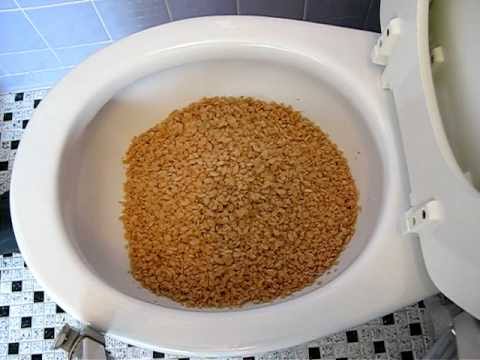The author is making a number of great pointers regarding Flushing Food Down the Toilet? as a whole in the content beneath.

Introduction
Many people are frequently confronted with the dilemma of what to do with food waste, specifically when it pertains to leftovers or scraps. One typical concern that develops is whether it's fine to purge food down the commode. In this write-up, we'll delve into the reasons that individuals may think about purging food, the effects of doing so, and alternative approaches for proper disposal.
Reasons individuals could take into consideration flushing food
Lack of understanding
Some individuals may not be aware of the prospective damage triggered by flushing food down the commode. They might erroneously think that it's a harmless technique.
Ease
Purging food down the commode may seem like a quick and easy remedy to getting rid of undesirable scraps, especially when there's no neighboring trash bin available.
Negligence
In some cases, people may merely pick to flush food out of large idleness, without considering the repercussions of their activities.
Consequences of flushing food down the commode
Ecological influence
Food waste that winds up in rivers can add to contamination and damage water ecosystems. Furthermore, the water utilized to flush food can strain water sources.
Plumbing concerns
Flushing food can cause clogged up pipelines and drains pipes, causing pricey plumbing fixings and inconveniences.
Sorts of food that need to not be flushed
Coarse foods
Foods with fibrous appearances such as celery or corn husks can get tangled in pipes and trigger blockages.
Starchy foods
Starchy foods like pasta and rice can take in water and swell, causing blockages in pipelines.
Oils and fats
Greasy foods like bacon or cooking oils need to never be flushed down the bathroom as they can solidify and cause blockages.
Appropriate disposal methods for food waste
Utilizing a waste disposal unit
For homes equipped with garbage disposals, food scraps can be ground up and purged with the plumbing system. Nonetheless, not all foods appropriate for disposal in this fashion.
Recycling
Particular food product packaging materials can be recycled, lowering waste and minimizing ecological influence.
Composting
Composting is an eco-friendly method to deal with food waste. Organic products can be composted and made use of to enhance soil for gardening.
The value of proper waste management
Minimizing environmental injury
Proper waste administration methods, such as composting and recycling, assistance lessen contamination and maintain natural deposits for future generations.
Securing pipes systems
By preventing the technique of flushing food down the bathroom, property owners can avoid costly plumbing repair work and keep the integrity of their pipes systems.
Conclusion
Finally, while it might be tempting to purge food down the toilet for convenience, it is necessary to recognize the possible repercussions of this activity. By embracing appropriate waste administration techniques and disposing of food waste sensibly, individuals can contribute to much healthier pipes systems and a cleaner environment for all.
FLUSH FOOD DOWN THE TOILET?
FLUSHING FOOD CAN CAUSE BLOCKED DRAINS IN YOUR HOME
All of the plumbing fixtures in your home are connected to the same sewer pipe outside of your home. This outdoor sewer pipe is responsible for transporting all the wastewater from your home to the Council sewer mains. Even small pieces of food that go down the kitchen sink can cause problems for your sewer. It should therefore be obvious that flushing larger bits of food, such as meat, risks a clog in either the toilet itself or the sewer pipes. Flushing greasy food is even more problematic because oil coagulates when it cools, coating the interior lining of your pipes.
THE TOILET IS NOT A BIN
Food isn’t the only thing that people shouldn’t be flushing down the toilet. People use the toilet to dispose of all kinds of things such as tampons, makeup wipes, dental floss, kitty litter and even underwear. Water goes to great lengths to educate residents about the high costs and stress placed on wastewater treatment systems simply from people flushing the wrong stuff down the toilet. It costs taxpayers millions of dollars each year, and homeowners thousands in blocked drain repairs.
FLUSHING FOOD IS A WASTE OF WATER
Flushing food is a waste of our most precious resource - water. In June this year Level 1 water restrictions were introduced to protect water supply from drought conditions. Much of New South Wales continues to be affected by prolonged drought with recent figures revealing up to 97 per cent of the state remains in drought. Depending on whether you have a single or dual flush toilet, every single flush uses between five and 11 litres of water. In the current climate this is a huge amount of water to be wasting on flushing food that should be placed in the bin (or better yet, the compost).
https://www.jabplumbingsolutions.com.au/blog/can-you-flush-food-down-the-toilet

We are very fascinated by Is it safe to flush food (especially rice) down the toilet? and I am assuming you liked the entire article. Sharing is nice. You won't know, you will be doing someone a favor. Thanks for your time invested reading it.
See Availability